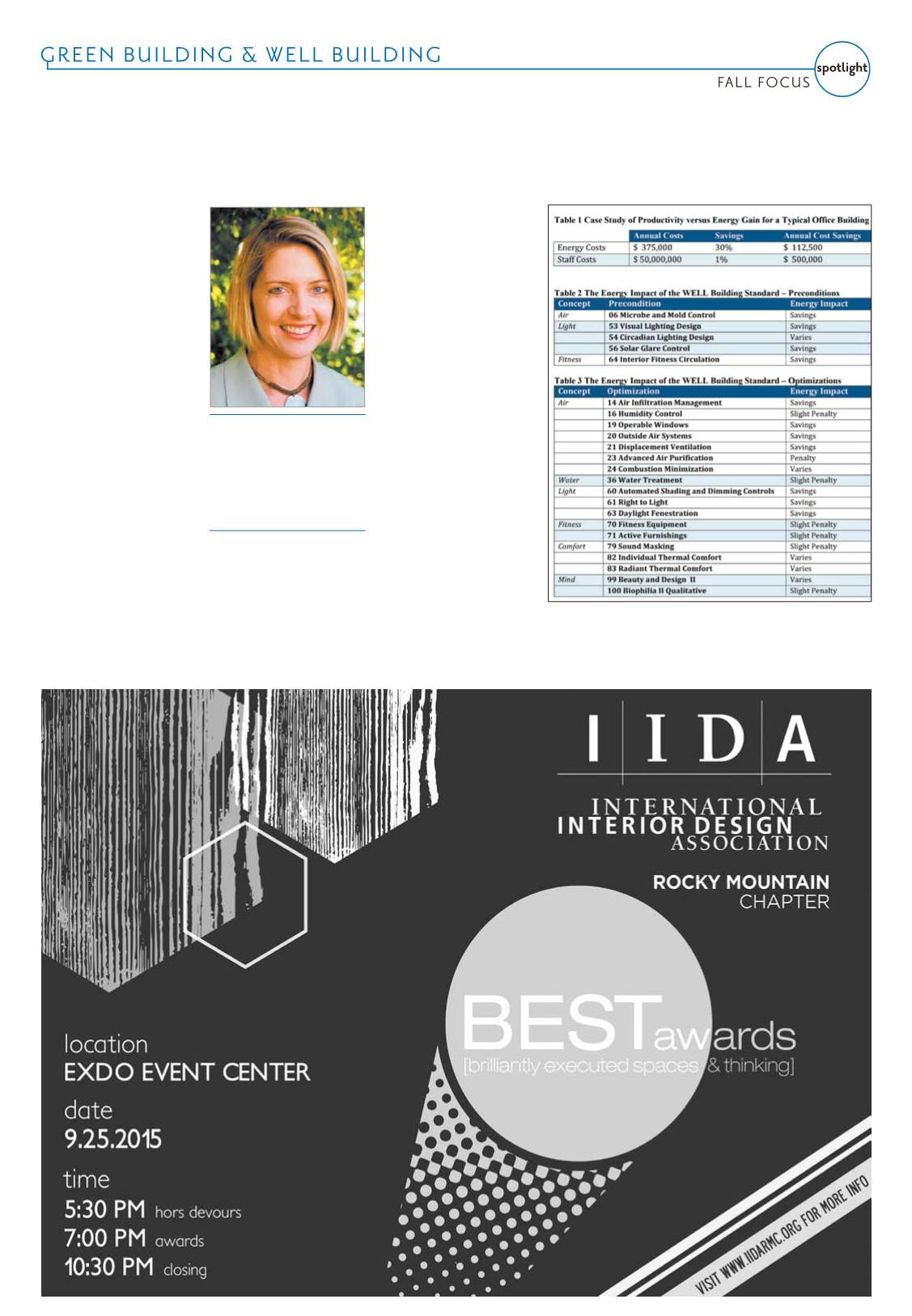
September 2-September 15, 2015
—
COLORADO REAL ESTATE JOURNAL
— Page 25B
W
ith the price of
energy declining
and the increased
frequency and severity of
illnesses, allergies, and chronic
diseases, the focus on health
and well-being of building
occupants is becoming more
and more mainstream.
The growth rate of chronic
diseases is trending upward.
Four factors cause 75 percent
of chronic diseases – stress,
physical inactivity, food choices
and tobacco. Chronic disease
management represents 67
percent of health care costs for
individuals under 65 years of
age.
Officially released in October
2014, prior to Greenbuild, the
WELL Building Standard is the
first of its kind with a focus on
improving human health and
wellbeing and reducing the
health care costs associated with
chronic diseases. The WELL
Building Standard focuses on
the environmental conditions
within buildings that the typical
American spends 90 percent of
their time.
Ambient Energy is providing
energy, commissioning and/
or sustainability consulting
on several projects utilizing
the WELL Building Standard,
including two office buildings
and one luxury condominium
in the Denver metro area. In
an effort to learn more about
WELL, I attended the inaugural
WELL Building Symposium
kickoff in New Orleans and the
first two-day WELL Building
Standard training for future
WELL Accredited Professionals
at the Cleveland Clinic in
Ohio. As an energy consultant
for over 17 years, my first
impression was that the WELL
Building Standard sounds like
a comprehensive and vigorous
rating system, but “what is the
true impact on energy and
the environment?” This article
describes my interpretation
of the energy usage and
environmental impacts
of select WELL Building
Standard Preconditions and
Optimizations in order to help
design teams pursuing WELL
maximum energy savings and
minimize energy penalties.
The WELL Building Standard
for New Construction is based
on 102 Features, which are
either Preconditions required
for WELL Certification
or Optimizations for
designated levels of award.
Required documentation
includes specific design and
construction information,
letters of assurance and on-site
verification of performance
features. An Accredited WELL
Assessor assigned by GBCI
will evaluate each building,
take air and water samples,
light measurements, acoustical
readings and provide a WELL
Report. Recertification is
required every three years
to maintain the same high
level of design, maintenance
and operations over time. A
Wellness score of 5 indicates
that all Precondition Features
have been met, and is the
minimum passing score. Scores
of 5-6 earn Silver, 7-8 earn Gold
and 9-10 earn Platinum, and
Renee Azerbegi,
CEM, LEED-AP, GGP,
LBC Ambassador
Presenter, Provisional
WELL AP
President, Ambient Energy, Denver


